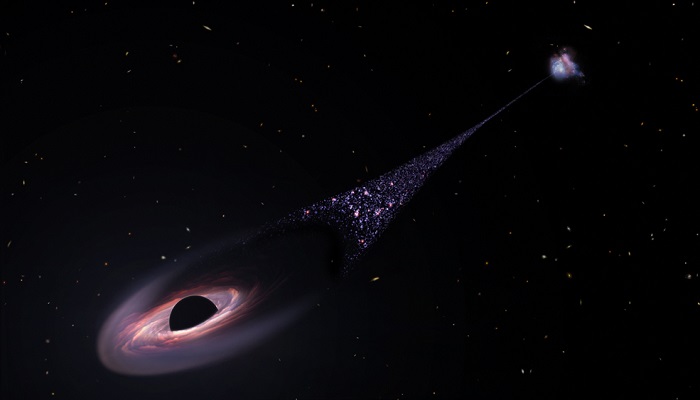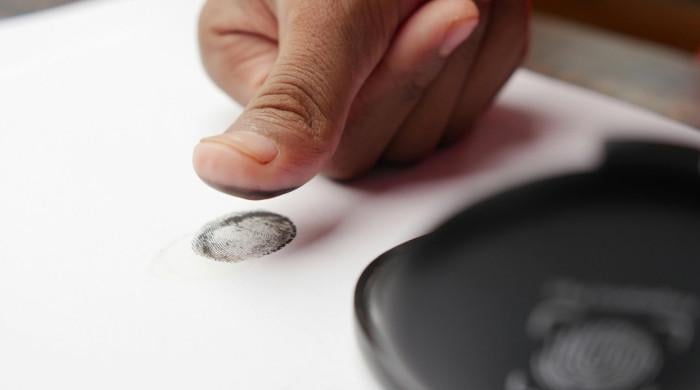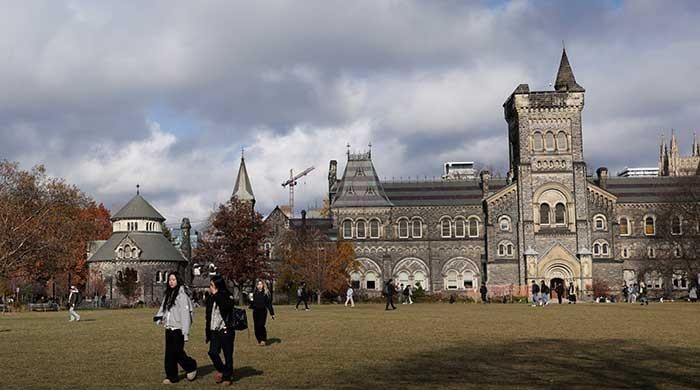Hubble captures supermassive black hole speeding through space making new stars
"We think we're seeing a wake behind the black hole where the gas cools and is able to form stars," scientist says
April 08, 2023

A supermassive black hole, as heavy as 20 million sun-sized stars combined, is going berserk through the spaces between the galaxies at astronomical speeds so insane that it could make it to the moon from Earth in only 14 minutes, NASA’s Hubble Space Telescope recorded.
When Hubble caught sight of this extremely rare cosmic activity it saw that the rare, gigantic black hole left behind a 200,000-light-year-long "contrail" of nascent stars. This contrail dwarfs the Milky Way galaxy that houses our solar system.
Scientists believe that a weird game of push-and-pull among three supermassive black holes was responsible for this celestial situation.
The supermassive black hole, which is moving at stupendous velocities, instead of devouring the matter ahead, is crunching the clouds of gas in its way to give birth to new stars turning a strip of space into a nebulous nursery.
"We think we're seeing a wake behind the black hole where the gas cools and is able to form stars. So, we're looking at star formation trailing the black hole," a NASA report quoted Pieter van Dokkum of Yale University in New Haven, Connecticut, as saying.
"What we're seeing is the aftermath. Like the wake behind a ship, we're seeing the wake behind the black hole." The trail must have lots of new stars, given that it is almost half as bright as the host galaxy it is linked to.
"Gas in front of it gets shocked because of this supersonic, very high-velocity impact of the black hole moving through the gas. How it works exactly is not really known," said van Dokkum.
"This is pure serendipity that we stumbled across it," van Dokkum added. He was looking for globular star clusters in a nearby dwarf galaxy. "I was just scanning through the Hubble image and then I noticed that we have a little streak. I immediately thought, 'oh, a cosmic ray hitting the camera detector and causing a linear imaging artifact.' When we eliminated cosmic rays we realized it was still there. It didn't look like anything we've seen before."









